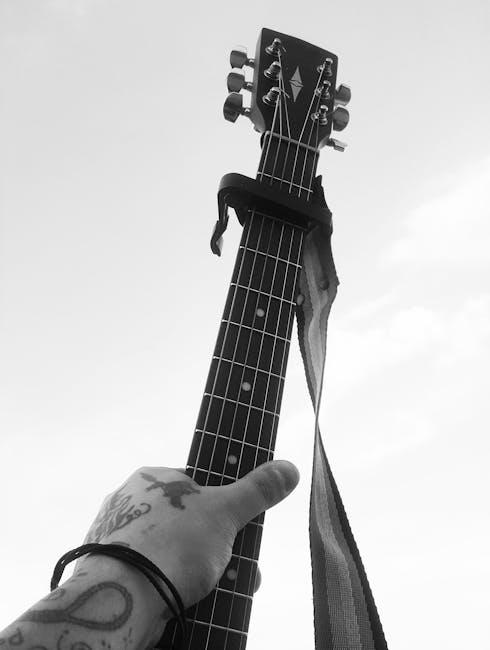In the ever-evolving landscape of music, the laws that protect creativity are undergoing a transformation just as dynamic as the melodies they shield. From the humble days of sheet music to the digital symphonies streaming around the globe, music copyright laws have continuously adapted to new technologies and cultural shifts. This article explores the recent changes in these laws, tracing how they reshape the balance between artists, consumers, and the industry. As notes and rights intertwine, understanding these changes becomes essential not only for creators but for anyone who cherishes the soundtrack of our lives.
Table of Contents
- Understanding the Evolution of Music Copyright Laws
- Impact of Digital Streaming on Copyright Regulations
- Balancing Artist Rights and Public Access in the Modern Era
- Navigating International Differences in Copyright Enforcement
- Emerging Challenges with Artificial Intelligence and Music Creation
- Strategic Recommendations for Musicians and Industry Stakeholders
- Q&A
- Insights and Conclusions

Understanding the Evolution of Music Copyright Laws
From the earliest days of music distribution, copyright laws have undergone a series of transformations to keep pace with technological advancements and shifts in consumer behavior. Initially designed to protect sheet music composers from unauthorized reproductions, these laws expanded their scope as the music industry evolved—from vinyl records to digital streaming platforms. Each phase brought new challenges, such as how to fairly compensate artists when their work could be duplicated infinitely at virtually no cost. The rise of the internet especially pushed lawmakers to rethink traditional paradigms, navigating complex issues of international jurisdiction and digital piracy.
Fundamental to understanding the modern landscape are the key principles that have remained in focus despite changes:
- Exclusive rights: Creators maintain control over reproduction, distribution, and public performance of their works.
- Duration of protection: Varies by jurisdiction but generally extends well beyond the artist’s lifetime to benefit heirs.
- Fair use and exceptions: Allow limited use for purposes like criticism, education, and news reporting.
| Era | Key Change | Impact on Artists |
|---|---|---|
| Early 20th Century | Protection of sheet music and recordings | Ensured composers received royalties for physical sales |
| Mid 20th Century | Radio and broadcast rights introduced | Expanded revenue streams through airplay royalties |
| 21st Century | Digital rights management and streaming laws | New licensing models for online platforms |

Impact of Digital Streaming on Copyright Regulations
As digital streaming platforms continue to dominate the music industry, traditional copyright regulations face unprecedented challenges. These platforms have revolutionized how music is accessed and monetized, prompting lawmakers and industry leaders to rethink legal frameworks to better protect intellectual property rights. This shift has led to increased emphasis on licensing agreements that reflect the realities of streaming consumption—where earnings are tied directly to the number of plays rather than physical sales or downloads. Consequently, copyright holders must navigate complex royalty distribution models that factor in various streaming tiers and user engagement patterns.
Moreover, the rapid expansion of online music sharing introduces new concerns regarding unauthorized use and infringement. Recent regulatory updates have introduced stricter enforcement mechanisms that aim to curb piracy while accommodating the evolving landscape of digital distribution. Key elements of these changes include:
- Enhanced digital rights management (DRM) to track and control content usage.
- Transparent reporting requirements for streaming services to ensure fair payment.
- International cooperation for cross-border copyright protection in the global streaming market.
| Regulation Aspect | Traditional Model | Streaming Era |
|---|---|---|
| Royalty Calculation | Per Album/Song Sale | Per Stream/Play |
| Usage Monitoring | Manual Tracking | Automated DRM Systems |
| Geographical Reach | Limited by physical distribution | Global Simultaneous Access |

Balancing Artist Rights and Public Access in the Modern Era
In today’s rapidly evolving digital landscape, the challenge of protecting creators’ intellectual property while ensuring public access to cultural works has never been more complex. Modern copyright laws must navigate a delicate path—championing fair compensation for musicians and composers without stifling innovation or the free flow of information. This balancing act often requires rethinking traditional models to embrace more flexible licensing options, such as Creative Commons, and adapting enforcement mechanisms to suit the nuances of streaming services and social media platforms.
Key considerations shaping these changes include:
- Equitable revenue distribution between artists, labels, and distributors
- Enhanced accessibility for educational and non-commercial uses
- Technological adaptation like blockchain for transparent royalty tracking
- International cooperation to address cross-border infringement
| Aspect | Traditional Approach | Modern Adaptation |
|---|---|---|
| Royalty Collection | Manual audits | Automated digital tracking |
| Licensing | Exclusive contracts | Flexible & shared licenses |
| Access | Restricted & paywalled | Open educational use |

Navigating International Differences in Copyright Enforcement
The landscape of copyright enforcement in the music industry can be as varied as the melodies it protects. Different countries have developed unique frameworks to manage and safeguard intellectual property, influenced by cultural norms, legal traditions, and economic priorities. For artists and producers, this means navigating a complex web of jurisdictions where what is fully protected in one region might be less rigorously enforced in another. Successful navigation requires a strategic understanding of these regional nuances, especially as digital distribution accelerates the cross-border consumption of music.
Key considerations include:
- Legal definitions of copyright infringement: These can differ vastly, impacting how violations are addressed.
- Enforcement mechanisms: Some countries rely on stringent governmental action, while others emphasize private litigation or industry self-regulation.
- International treaties and agreements: Instruments like the Berne Convention provide a baseline but are interpreted differently across borders.
| Region | Enforcement Style | Common Challenges |
|---|---|---|
| North America | Strong governmental and civil law enforcement | High litigation costs, delays in digital enforcement |
| Europe | Harmonized laws but varying implementation | Cross-border disputes, slow judicial processes |
| Asia | Increasingly strict but uneven across countries | Piracy hotspots, inconsistent penalties |
| South America | Emerging enforcement frameworks | Limited resources, informal market dominance |

Emerging Challenges with Artificial Intelligence and Music Creation
As AI-generated melodies continue to blur the lines between human creativity and machine output, legal systems worldwide face mounting pressure to evolve. Traditional copyright frameworks, designed for human authorship, struggle to accommodate compositions crafted by algorithms. Key concerns include:
- Determining authorship and ownership rights when AI plays a primary role
- Addressing the originality standards for machine-produced works
- Adapting licensing models to include AI contributions without stifling innovation
To navigate this complex landscape, policymakers and industry stakeholders are exploring new regulatory models. Some propose hybrid copyright systems that recognize both AI tools and human input, while others call for entirely novel rights frameworks tailored to artificial creators. Below is a simplified overview of current approaches emerging globally:
| Region | Approach | Focus |
|---|---|---|
| EU | Human-centric copyright | Preserving human authorship in AI-assisted works |
| US | No copyright for non-human | Excludes AI-only generated content from protection |
| Japan | Licensing innovation | Encourages AI use with flexible rights |

Strategic Recommendations for Musicians and Industry Stakeholders
Embracing technological tools is crucial for both musicians and industry stakeholders to navigate the evolving legal landscape efficiently. Leveraging platforms that track music usage and automate royalty collections can reduce discrepancies and empower artists through transparent revenue streams. Staying informed about policy shifts through regular workshops or industry newsletters ensures proactive adaptation, rather than reactive compliance, in this dynamic environment.
Building collaborative partnerships between artists, record labels, publishers, and legal experts fosters a holistic understanding of rights management and contractual safeguards. Consider adopting a multi-faceted strategy that includes:
- Utilizing copyright management software
(e.g., blockchain-powered registries) - Engaging in advocacy for fair compensation
(through music unions or coalitions) - Customizing contracts with clear, updated clauses that reflect modern distribution methods
| Strategic Action | Benefit | Consideration |
|---|---|---|
| Digital Rights Management | Enhanced royalty accuracy | Upfront investment required |
| Legal Consultancy | Risk mitigation | Ongoing fees |
| Stakeholder Workshops | Improved industry cohesion | Time commitment |
Q&A
Q&A: Understanding the
Q1: What are the recent changes in music copyright laws all about?
A1: Recent changes in music copyright laws primarily focus on adapting legal frameworks to the digital age. This includes updates to how royalties are tracked and distributed, enhanced protections against unauthorized use online, and clearer rules for streaming services and user-generated content platforms.
Q2: Why were these changes necessary?
A2: The evolution of technology—especially streaming and social media—has transformed how music is consumed and shared. Old laws couldn’t keep up with new platforms, often leaving artists uncompensated or unclear about their rights. These updates aim to create a fairer, more transparent system.
Q3: How do these changes affect artists?
A3: For artists, the new laws can mean better control over their work and potentially increased earnings. They often grant more leverage in negotiations with streaming and distribution companies and help in combating piracy more effectively.
Q4: What about music consumers—do these laws impact them?
A4: Consumers might notice changes in how music is accessed or licensed on various platforms. For example, user-generated content creators may face stricter rules about using copyrighted music, but overall, these laws strive to maintain a balance between access and protection.
Q5: Are streaming services impacted by these changes?
A5: Yes, streaming services have to comply with stricter reporting and payment requirements to ensure artists receive fair compensation. They also need to implement better systems for detecting unauthorized uploads and manage licensing agreements more transparently.
Q6: Do these laws address international copyright issues?
A6: Many recent updates push towards greater international cooperation, recognizing that music often crosses borders instantly. While challenges remain, improvements aim to streamline cross-country licensing and enforcement.
Q7: What challenges remain despite these legal updates?
A7: Enforcement remains a major hurdle, especially with the vast volume of online content. Balancing innovation and fair use while protecting creators’ rights continues to be a complex, evolving challenge.
Q8: How can artists protect themselves in this changing landscape?
A8: Artists should stay informed about their rights, register their works properly, and consider professional representation or agencies that specialize in rights management to navigate the new laws effectively.
Q9: Where can readers learn more about music copyright laws?
A9: Reliable sources include government websites dedicated to intellectual property, music industry organizations, and legal experts’ publications. Staying engaged with workshops or industry forums can also provide valuable insights.
With these changes, the music world takes another step toward fairer recognition and remuneration, ensuring that creativity continues to thrive in harmony with the law.
Insights and Conclusions
As the melodies of our culture continue to evolve, so too do the laws that protect the creative sparks behind them. Navigating the shifting landscape of music copyright requires an understanding as dynamic as the art itself—balancing the rights of creators with the rhythms of an ever-changing industry. Whether you’re a songwriter, a producer, or simply a passionate listener, staying attuned to these legal harmonies ensures that the music keeps playing, fair and free in its own rightful way. In this ongoing symphony of change, the future of music copyright remains an open score, inviting all stakeholders to contribute their unique notes.

